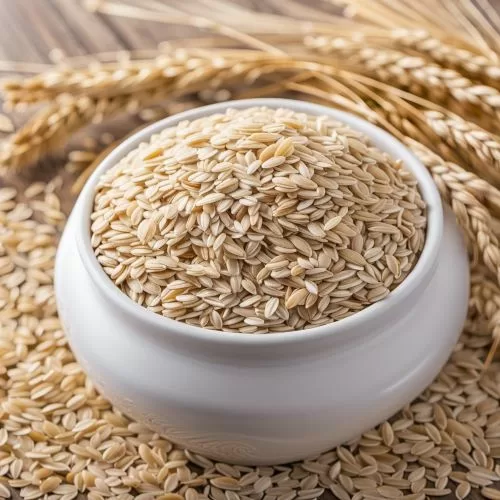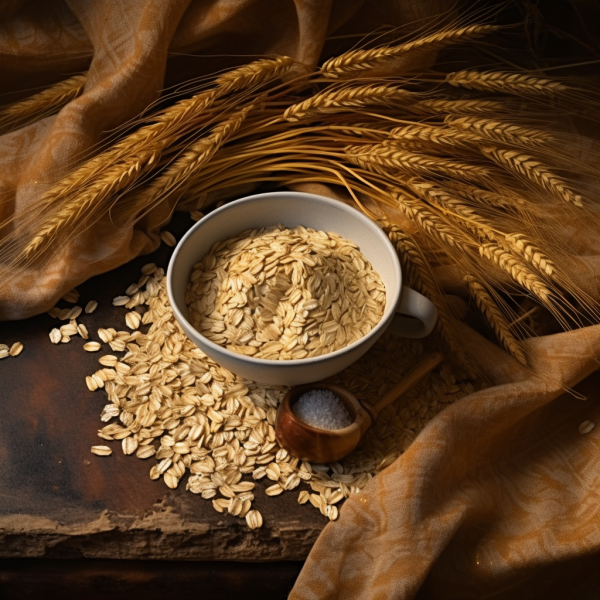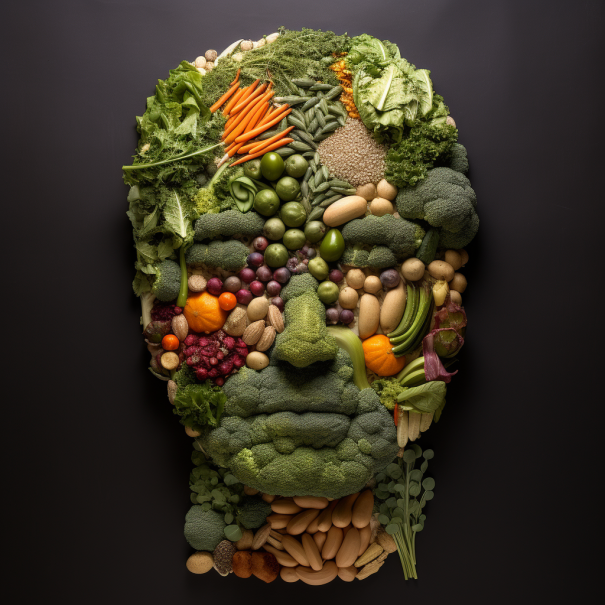Oats 101: Everything You Need to Know About Groats, Oats, and Oatmeal
Oats have become a staple in many households, celebrated for their nutritional value, versatility, and delicious taste. From hearty breakfast bowls to scrumptious baked goods, oats have found their way into our kitchens in various forms. However, navigating the world of oats can be quite a challenge with terms like groats, oats, and oatmeal often causing confusion. In this comprehensive guide, titled “Oats 101: Everything You Need to Know About Groats, Oats, and Oatmeal,” we aim to unravel the mysteries surrounding this humble yet mighty grain.
Brief overview of the popularity and versatility of oats
Oats have experienced a remarkable surge in popularity in recent years, thanks to their impressive nutritional profile and versatility in the culinary world. Whether you’re looking for a wholesome breakfast option, a satisfying snack, or a nutritious ingredient for baking, oats can be your go-to choice. They are not only nourishing but also adaptable, lending themselves to a wide range of recipes and preparations.
Importance of understanding the different forms of oats
While oats may seem straightforward, it’s essential to understand the distinctions between various forms of oats to make informed choices in the kitchen. Oats can be found in different iterations, such as oat groats, rolled oats, and steel-cut oats, each offering unique characteristics and culinary potential. By comprehending these distinctions, you can harness the full benefits of oats and explore their diverse applications.
Now that we’ve set the stage and highlighted the significance of understanding the different forms of oats, let’s delve deeper into the intricacies of oats in the following section, “II. Understanding Oats: Types and Processing Methods.” We will explore the defining features of oat groats, rolled oats, and steel-cut oats, shedding light on their nutritional benefits and varying textures. So, join us as we embark on a journey through the complex and fascinating world of oats.
Understanding Oats: Types and Processing Methods
Exploring oat groats
Oat groats are the least processed form of oats, consisting of the whole oat kernel with the inedible outer husk removed. They have a chewy texture and a nutty flavor. Due to their minimal processing, oat groats retain most of their natural nutrients, including fiber, protein, and essential vitamins and minerals. Their high fiber content promotes satiety and aids in digestion. Oat groats are often used as a base for grain salads or as an alternative to rice or quinoa in savory dishes.
Unraveling rolled oats
Rolled oats, also known as old-fashioned oats, are made by steaming oat groats and then rolling them flat with large rollers. This process helps increase their shelf life and reduces cooking time. Rolled oats have a softer texture compared to oat groats and are commonly used in oatmeal, cookies, granola bars, and other baked goods. They are versatile, cook relatively quickly, and offer a balance between texture and convenience. However, the rolling process reduces their overall fiber content compared to oat groats.
Demystifying steel-cut oats
Steel-cut oats, also known as Irish oats or pinhead oats, are made by chopping oat groats into small pieces with steel blades. This minimal processing results in a dense and chewy texture with a robust oat flavor. Steel-cut oats take longer to cook than rolled oats but offer a more substantial and satisfying texture. They are ideal for creating creamy porridge or oatmeal with a delightful bite. Steel-cut oats are also a popular choice for slow cooker recipes or overnight oats that require minimal morning preparation.

Now that we’ve explored the different types of oats and their processing methods, we can move on to the next section where we will dive into the various ways oats can be prepared and enjoyed. From classic stovetop oatmeal to convenient instant oats, we’ll uncover the many possibilities that oats offer. So, join us as we continue our journey through the complex and fascinating world of oats.
From Oats to Oatmeal: Preparation and Consumption
Traditional oatmeal
Traditional oatmeal is a comforting and nourishing breakfast option loved by many. There are various cooking methods to prepare oatmeal, including stovetop, microwave, or even using a slow cooker. Stovetop oatmeal allows for more control over the texture and consistency, while microwave preparation offers convenience and speed. Whichever method you choose, oatmeal has a creamy texture and can be customized with toppings like fresh fruits, nuts, seeds, or a drizzle of honey or maple syrup. The flavor profile of oatmeal is subtly sweet with a pleasant nuttiness, making it a versatile canvas for adding different flavors.
Instant oats and pre-packaged oatmeal
For those seeking a quick and effortless breakfast option, instant oats and pre-packaged oatmeal are popular choices. These products are pre-cooked and often flavored for convenience. Instant oats can be prepared by simply adding hot water or milk, and within minutes, you have a warm bowl of oatmeal ready to enjoy. It’s important to note that some pre-packaged oatmeal products may contain added sugars, artificial flavors, or preservatives. Reading labels and opting for plain or low-sugar varieties can help you make healthier choices.
Creative culinary uses for oats
Oats extend beyond breakfast bowls and can be incorporated into a wide range of culinary creations. They add texture, flavor, and nutritional benefits to various recipes. Oats can be used as a substitute for breadcrumbs in meatballs or meatloaf, providing moisture and enhancing nutritional value. In baking, oats can be added to muffins, cookies, bread, and granola bars, imparting a delightful chewiness and nutty taste. Oats can also be blended into smoothies for a fiber boost or used to create oat milk, a dairy-free alternative.
Now that we have explored the different ways oats can be prepared and consumed, from traditional oatmeal to instant oats and creative culinary uses, it’s time to delve into the exciting realm of cooking with oats. In the upcoming section where we will provide you with a variety of cooking suggestions tailored to each oat variety or processing method. Whether you have oat groats, rolled oats, or steel-cut oats in your pantry, we have delightful recipes and tips to bring out the best in each form. So, let’s embark on a culinary adventure and unlock the full potential of oats in your kitchen.
Culinary Delights: Cooking Suggestions for Each Oat Variety or Processing Method
Now that we have explored the different types of oats and their unique characteristics, it’s time to dive into the exciting world of cooking with oats. In this section, “Culinary Delights: Cooking Suggestions for Each Oat Variety or Processing Method,” we will provide you with a range of cooking suggestions tailored to each type of oat or processing method. From oat groats to rolled oats and steel-cut oats, we’ll guide you through the culinary possibilities and help you create delicious and nutritious meals using this versatile grain.
Oat Groats
Oat groats are the whole, unprocessed form of oats that have a dense and chewy texture with a rich nutty flavor. Here are some cooking suggestions and ideas for incorporating oat groats into your meals:
Soaking overnight for easier cooking:
To reduce the cooking time and improve the texture of oat groats, you can soak them overnight. Simply place the oat groats in a bowl, cover them with water, and let them soak overnight. This process softens the groats and helps to speed up the cooking process the next day.

Stovetop cooking method and approximate cooking time:
To cook oat groats on the stovetop, drain and rinse the soaked groats, then place them in a pot with a ratio of approximately 1 part oat groats to 3 parts water or broth. Bring the liquid to a boil, then reduce the heat to a simmer. Cook the groats for about 45 minutes to 1 hour, or until they are tender and have reached your desired consistency. You may need to adjust the cooking time slightly depending on the specific brand or variety of oat groats you are using.
Incorporating groats into grain salads or pilafs:
Cooked oat groats can be a nutritious and delicious addition to grain salads or pilafs. Once the groats are cooked and cooled, you can mix them with other cooked grains like quinoa, bulgur, or wild rice. Add your choice of vegetables, herbs, and dressings to create a flavorful and satisfying grain salad. Oat groats can also be used as a substitute for rice or other grains in pilafs, providing a heartier texture and a pleasant nutty taste.
Remember, oat groats offer a unique texture and flavor that can add depth and variety to your meals. Don’t be afraid to get creative and experiment with different combinations of ingredients to discover your favorite ways to enjoy oat groats.
Rolled Oats
Rolled oats, also known as old-fashioned oats, are a versatile and widely used form of oats. Here are some cooking suggestions and ideas for incorporating rolled oats into your meals:
Classic stovetop method for creamy oatmeal:
The classic stovetop method is a popular way to prepare creamy and comforting oatmeal using rolled oats. In a saucepan, combine 1 part rolled oats with 2 parts water or milk (you can adjust the liquid ratio based on your preferred consistency). Bring the mixture to a boil, then reduce the heat to a simmer. Cook for about 5-10 minutes, stirring occasionally, until the oats have absorbed the liquid and reached a creamy texture. Customize your oatmeal by adding toppings such as fresh fruits, nuts, seeds, honey, or a sprinkle of cinnamon.

Quick and easy microwave preparation:
If you’re looking for a quick and convenient way to prepare oatmeal, the microwave method is perfect. In a microwave-safe bowl, combine 1 part rolled oats with 2 parts water or milk. Microwave on high for 1-2 minutes, stirring halfway through, until the oats are cooked and the desired consistency is achieved. Be careful not to overcook, as the oats may become too dry.
Using rolled oats in granola bars or cookies:
Rolled oats are a versatile ingredient for baking delicious treats like granola bars and cookies. In granola bars, combine rolled oats with a mixture of honey, nut butter, dried fruits, and nuts. Press the mixture into a baking dish and bake until golden and set. For cookies, incorporate rolled oats into the dough along with other ingredients like flour, sugar, butter, and chocolate chips. Bake the cookies until they are golden brown around the edges. The rolled oats add a delightful chewiness and nutty flavor to these baked goods.
Rolled oats offer a wonderful texture and versatility that can be enjoyed in both sweet and savory dishes. Don’t hesitate to experiment with different flavor combinations and recipes to find your favorite ways to use rolled oats.
Steel-Cut Oats
Steel-cut oats, also known as Irish oats or pinhead oats, have a dense and chewy texture with a robust oat flavor. Here are some cooking suggestions and ideas for incorporating steel-cut oats into your meals:
Simmering on the stovetop for a hearty breakfast:
The stovetop method is a traditional way to prepare steel-cut oats for a warm and hearty breakfast. In a saucepan, combine 1 part steel-cut oats with 3-4 parts water or milk (adjust the liquid ratio to your preferred consistency). Bring the mixture to a boil, then reduce the heat to low. Simmer the oats for about 20-30 minutes, stirring occasionally, until they are tender and have a creamy texture. The longer cooking time compared to rolled oats allows the steel-cut oats to develop a satisfying chewiness. Serve the cooked oats with your favorite toppings, such as fresh fruits, nuts, honey, or a drizzle of maple syrup.
Utilizing a slow cooker for convenient overnight cooking:
If you prefer a hassle-free breakfast, the slow cooker method is perfect for preparing steel-cut oats overnight. In a slow cooker, combine 1 part steel-cut oats with 3-4 parts water or milk. Add any desired flavorings like cinnamon, vanilla extract, or dried fruits. Cover the slow cooker and cook on low heat for 6-8 hours, allowing the oats to soften and absorb the flavors while you sleep. In the morning, you’ll wake up to a warm and ready-to-eat bowl of creamy steel-cut oats.
Adding steel-cut oats to soups or stews for added texture:
Steel-cut oats can also be a creative addition to soups or stews, providing a unique texture and nutritional boost. Add a small amount of steel-cut oats to your favorite soup or stew recipe during the cooking process. As the oats simmer, they will absorb some of the liquid and add a hearty and chewy element to the dish. They can enhance the overall texture and provide additional nutrients, making your soup or stew more filling and satisfying.
Steel-cut oats offer a distinct texture and flavor profile that can be enjoyed in various ways. Whether you prefer them for breakfast or as an ingredient in savory dishes, steel-cut oats bring a delightful chewiness and nutritional value to your meals.
Instant Oats and Pre-Packaged Oatmeal
Instant oats and pre-packaged oatmeal offer a convenient and quick way to enjoy oatmeal on busy mornings. Here are some tips and ideas for preparing and enhancing the flavor of instant oats and pre-packaged oatmeal:
Simple instructions for quick preparation:
Instant oats and pre-packaged oatmeal typically come with simple instructions for quick preparation. All you need to do is add hot water or milk to the oats, following the recommended liquid-to-oat ratio provided on the packaging. Stir well and let the oats sit for a few minutes to allow them to soften and absorb the liquid. The oats will quickly cook and become creamy, ready to be enjoyed in no time.
Enhancing flavor with toppings like fruits, nuts, or spices:
While instant oats and pre-packaged oatmeal often come in flavored varieties, you can elevate the flavor and nutritional value by adding your own toppings. Fresh fruits such as sliced bananas, berries, or diced apples can add natural sweetness and a burst of freshness. Sprinkle in a handful of chopped nuts or seeds for added crunch and a dose of healthy fats. Experiment with spices like cinnamon, nutmeg, or vanilla extract to add warmth and depth of flavor. You can even drizzle a touch of honey, maple syrup, or agave nectar for added sweetness, if desired.
Being mindful of added sugars in flavored instant oats:
When selecting flavored instant oats or pre-packaged oatmeal, it’s important to be mindful of the added sugars that can contribute to the overall sweetness. Read the labels and choose options that are lower in added sugars or opt for plain varieties that allow you to control the sweetness yourself. Adding your own natural sweeteners, like fresh fruits or a small amount of honey or maple syrup, can provide a healthier and more balanced sweetness.
Instant oats and pre-packaged oatmeal offer convenience without compromising the nutritional benefits of oats. By personalizing your toppings and being mindful of added sugars, you can create a delicious and nutritious bowl of oatmeal that suits your taste preferences and dietary needs. Enjoy the simplicity and ease of these instant options while still enjoying the goodness of oats.
Culinary Uses for Oats
Oats are not only limited to breakfast bowls and oatmeal; they can also be incorporated into a wide range of culinary creations. Here are some exciting culinary uses for oats:
Baking with oats: muffins, cookies, and bread:
Oats can be a versatile ingredient in baking, adding texture and nutritional value to various treats. Consider incorporating oats into muffins, cookies, and bread recipes. You can replace a portion of the flour with oats or use oat flour as a gluten-free alternative. Rolled oats or quick oats can also be added directly to the batter to provide a delightful chewiness and nutty flavor. Get creative and experiment with different combinations of flavors and ingredients to discover your favorite oat-based baked goods.
Blending oats into smoothies for added fiber and creaminess:
For a nutritious boost, blend oats into your favorite smoothie recipes. Rolled oats or quick oats can be added to the blender along with fruits, vegetables, yogurt, or plant-based milk. The oats will contribute fiber, which adds thickness and creaminess to the smoothie. They also provide sustained energy and can help you feel fuller for longer. Be sure to blend the oats thoroughly to achieve a smooth consistency in your smoothie.
Exploring savory dishes like oat-based veggie burgers or meatloaf:
Oats can be a fantastic ingredient for creating savory dishes like veggie burgers or meatloaf. They act as a binder, helping to hold the ingredients together while adding a pleasant texture. To make oat-based veggie burgers, combine cooked oats with mashed beans, vegetables, herbs, and spices. Shape the mixture into patties and cook them on a stovetop or grill. For a savory oat-based meatloaf, mix oats with ground meat, onions, garlic, and seasonings, then shape the mixture into a loaf and bake until cooked through. The oats add moisture and contribute to the overall texture of these savory dishes.
Get creative in the kitchen and explore the versatility of oats beyond traditional recipes. Baking with oats, blending them into smoothies, and using them in savory dishes can expand your culinary repertoire and introduce new flavors and textures to your meals. Don’t be afraid to experiment and adapt recipes to suit your taste preferences. Oats are a versatile ingredient that can enhance both sweet and savory dishes with their nutritional benefits and delightful taste.
Now that we have explored the wonderful cooking possibilities for each oat variety or processing method, let’s move on to the next section where we will delve into the impressive nutritional profile of oats and their various health benefits. Join us as we uncover the potential health advantages of incorporating oats into your diet and address important considerations.
Nutritional Benefits and Health Considerations
Overview of oat’s nutritional profile
Oats are a nutrient-dense grain that provides a range of essential nutrients. Here’s a glimpse into the nutritional profile of oats:
Macronutrients:
- Fiber: Oats are an excellent source of dietary fiber, including both soluble and insoluble fiber. Fiber aids in digestion, helps maintain bowel regularity, and promotes a feeling of fullness.
- Protein: While oats are not a complete protein source, they contain a moderate amount of plant-based protein, making them a valuable addition to vegetarian and vegan diets.
- Carbohydrates: Oats are primarily composed of carbohydrates, including complex carbohydrates that provide sustained energy throughout the day.
- Fats: Oats are low in fat, with most of the fat being healthy unsaturated fats.
Micronutrients:
- Vitamins: Oats contain various vitamins, including vitamin E, thiamine (vitamin B1), and folate (vitamin B9).
- Minerals: Oats are rich in minerals such as iron, magnesium, phosphorus, and zinc.
The role of oats in a balanced diet
Incorporating oats into a balanced diet can offer several health benefits:
Managing cholesterol levels and heart health:
Oats contain a soluble fiber called beta-glucan, which has been shown to help lower cholesterol levels. Regular consumption of oats can contribute to reducing the risk of cardiovascular diseases.
Supporting digestive health and weight management:
The fiber content in oats supports healthy digestion by promoting regular bowel movements. Oats can also help with weight management as they provide a feeling of fullness and can aid in portion control.
Addressing potential allergens and sensitivities
While oats are naturally gluten-free, there are a few considerations to keep in mind:
Gluten-free oats and cross-contamination risks:
Some individuals with celiac disease or gluten sensitivities can tolerate gluten-free oats. It’s important to choose oats that are specifically labeled as gluten-free to minimize the risk of cross-contamination during processing.
Allergic reactions and precautions to take:
Although rare, some individuals may have an allergic reaction to oats. If you experience symptoms such as itching, swelling, or difficulty breathing after consuming oats, it’s essential to seek medical advice. Additionally, oats may interact with certain medications, so it’s important to consult with a healthcare professional if you have any concerns.
Remember, while oats offer numerous health benefits, it’s important to consider your individual dietary needs and consult with a healthcare professional for personalized advice.
As we conclude our exploration of the nutritional benefits and health considerations of oats, let’s reflect on the versatility and nourishing qualities of this remarkable grain. By understanding the nutritional value of oats and making informed choices, you can embrace oats as a valuable component of a wholesome and balanced diet.
Conclusion
We have explored the vast world of oats, from groats to rolled oats and steel-cut oats, each with its unique characteristics and culinary possibilities. Throughout, we have gained a comprehensive understanding of how oats are sold, prepared, and consumed, as well as the health benefits associated with this humble grain.
Oats are not only a nutritious powerhouse but also an incredibly versatile ingredient. Whether you choose oat groats for their dense texture, rolled oats for their convenience, or steel-cut oats for their robust flavor, oats offer endless culinary opportunities. From classic stovetop oatmeal to creative baking ventures and savory dishes, oats can be incorporated into a wide range of recipes to suit various tastes and preferences.
The health benefits of oats cannot be overlooked. With their high fiber content, oats promote digestion, support heart health, and aid in weight management. They are a wholesome addition to a balanced diet and can contribute to overall well-being.
As we conclude this article, we encourage you to explore the world of oats further. Experiment with different cooking methods, toppings, and recipes to find your favorite way to enjoy oats. Let your creativity shine as you bake with oats, blend them into smoothies, and venture into the realm of savory oat-based dishes. The versatility of oats knows no bounds, and with each new culinary endeavor, you’ll discover the delightful possibilities that this simple yet remarkable grain has to offer.
So, embrace the versatility, health benefits, and culinary delights of oats. Let your journey with oats begin, and may it be filled with delicious and nutritious experiences that elevate your appreciation for this humble grain.
Related FAQ
What are the different types of oats?
There are several types of oats, including oat groats, rolled oats, and steel-cut oats. Each type has its own unique texture and cooking characteristics.
Are oats gluten-free?
While oats themselves are naturally gluten-free, they can sometimes be cross-contaminated with gluten during processing. Look for certified gluten-free oats if you have a gluten intolerance or sensitivity.
What are the health benefits of eating oats?
Oats are a great source of dietary fiber, which aids in digestion and helps manage cholesterol levels. They also provide essential nutrients, such as vitamins, minerals, and antioxidants, contributing to overall well-being.
Can I use oats in baking recipes?
Absolutely! Oats can be a versatile ingredient in baking. Use them in muffins, cookies, bread, and more to add texture and a nutty flavor to your baked goods.
How do I cook oats for a perfect bowl of oatmeal?
For a classic bowl of oatmeal, combine oats with water or milk and cook on the stovetop or in the microwave. Adjust the cooking time and liquid ratio to achieve your preferred consistency. Add your favorite toppings, such as fruits, nuts, or spices, for extra flavor and nutrition.
Key Take Away
- Understand the different forms of oats: From oat groats to rolled oats and steel-cut oats, explore their unique characteristics and cooking methods.
- Embrace the versatility of oats: Incorporate oats into a variety of dishes, including breakfast bowls, baked goods, smoothies, and savory recipes.
- Enjoy the health benefits of oats: Oats are rich in fiber, promote heart health, aid in digestion, and support weight management.
- Be mindful of processing and added sugars: Opt for less processed oats and be aware of added sugars in flavored oatmeal options.
- Experiment and get creative: Explore new cooking techniques, toppings, and recipes to make the most of the nutritious and delicious possibilities oats have to offer.
Glossary
- Oats: Whole-grain cereal crop known for its versatility and nutritional benefits.
- Groats: Whole, unprocessed oats that have been cleaned and hulled.
- Rolled oats: Oats that have been steamed and flattened with large rollers for quicker cooking.
- Steel-cut oats: Oats that have been chopped into small pieces with steel blades, resulting in a dense and chewy texture.
- Instant oats: Pre-cooked and dried oats that can be quickly prepared by adding hot water or milk.
- Oatmeal: A popular breakfast dish made by cooking oats in water or milk.
- Fiber: A type of carbohydrate found in oats that aids in digestion and provides a feeling of fullness.
- Beta-glucan: A soluble fiber found in oats that has been linked to cholesterol-lowering and heart health benefits.
- Gluten-free oats: Oats that are specifically processed and certified to be free of gluten, suitable for individuals with gluten intolerances or celiac disease.
- Micronutrients: Essential vitamins and minerals found in oats, such as iron, magnesium, and vitamin E, that contribute to overall health and well-being.
Additional Resources
- Books:
- The Oat Groat: A Comprehensive Guide by Philip M. Parker Ph.D. (2012)
- Oats: A Global History by John T. Goodrich (2017)
- The Oatmeal Doctor: The Ultimate Guide to Using Oatmeal for Health and Weight Loss by David Grotto, MS, RD (2015)
- The Oat-Powered Brain: How Oats Can Help You Think Sharper, Feel Happier, and Live Longer by David Perlmutter, MD, and Kristin Loberg (2016)
- Studies:


